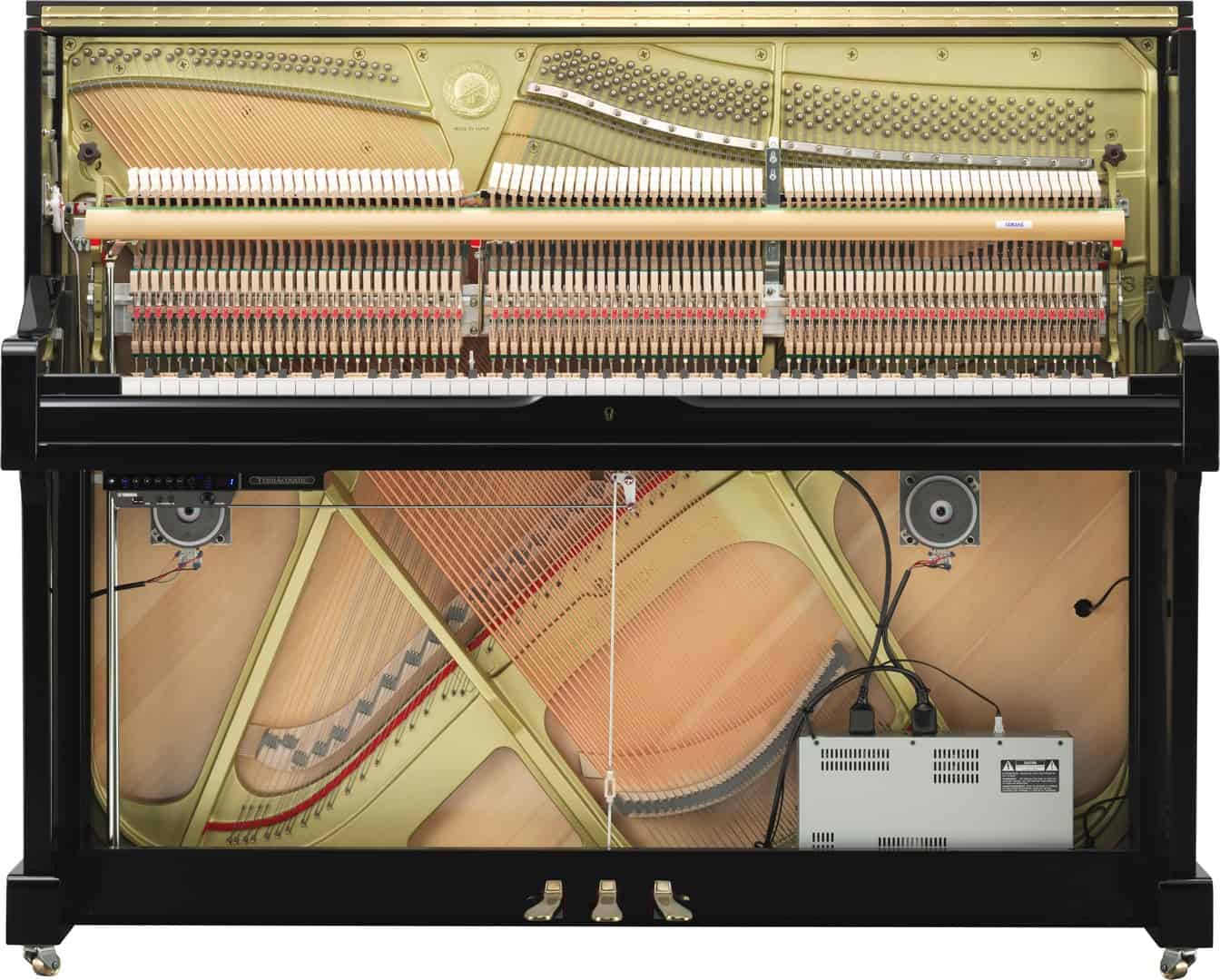Re: Pianoteq 5 impressions
About Yamaha U1TA PE:

http://www.youtube.com/watch?feature=pl...9IgDeN2GMc
http://www.delamar.de/instrumente/yamaha-u1ta-23453/
It have two transducers as you ca see. But I wonder if the transducers can get the high frequencies very well. I imagined a transducer for high would be diferente, but appears that both transducers are the same kind.
Kawai use one single transducer, but requires speakers for the high frequencies. So I imagined that the metalic sounds of piano high frequencies could not be recreated very well just with transducers on soundboard as a real piano generate sounds not just from soundboard but also from strings vibrating in the air and the harp.
How it would sound connected to pianoteq, since the soundbaord vibration would also affect the iron frame harp and the strings (a liitle even with silencer) ???
Unless Modartt creates a pianoteq upright preset (specially for this Yamaha model) to send more the sound adequate for soundboard vibrations and less for the sounds for harp.

